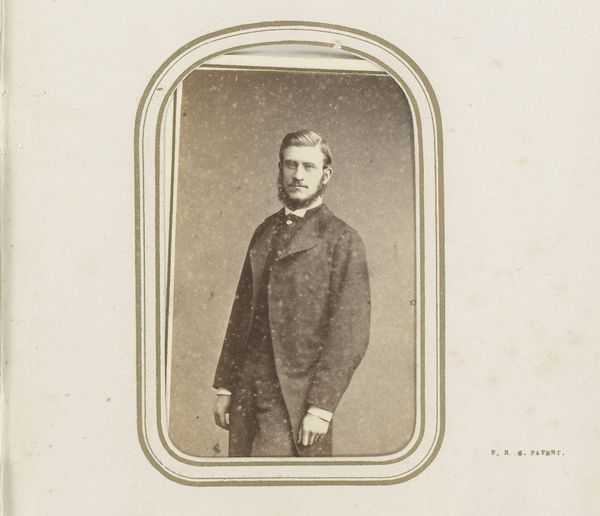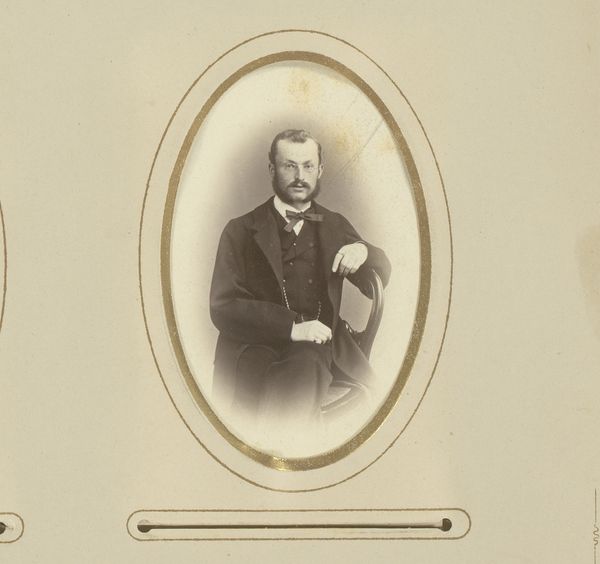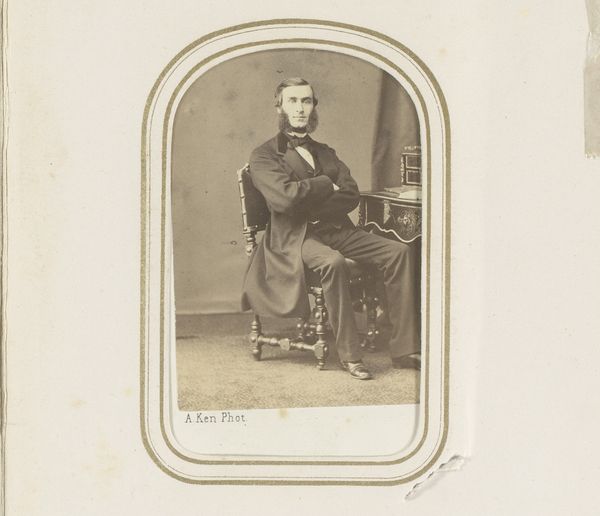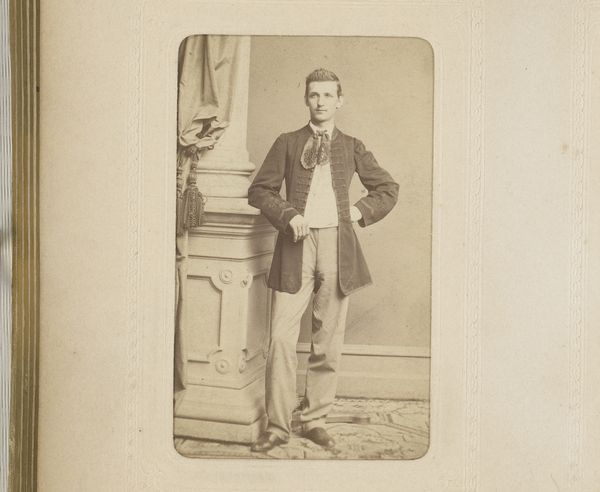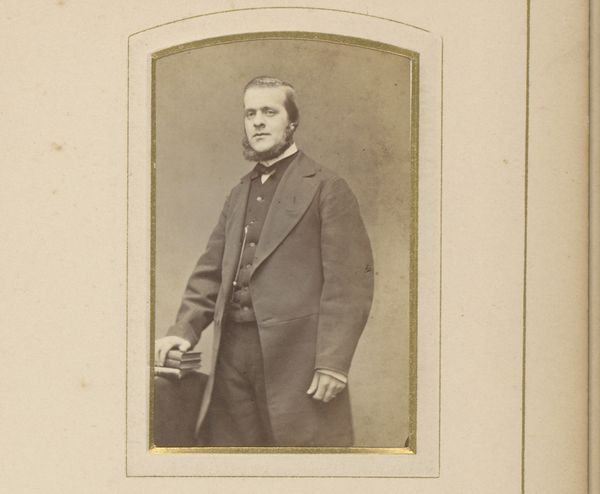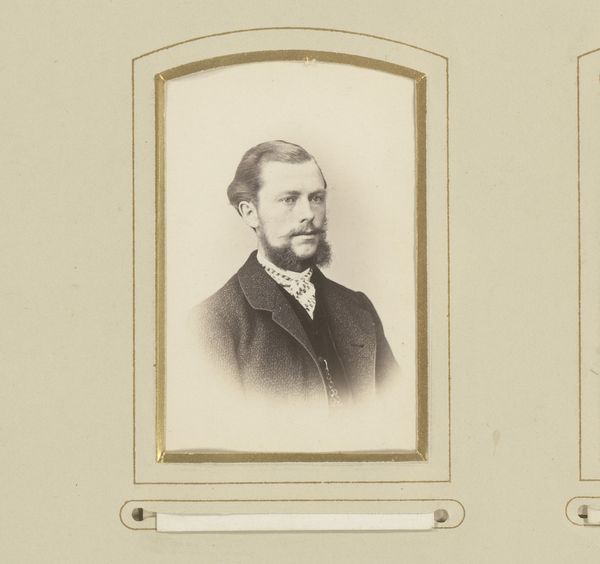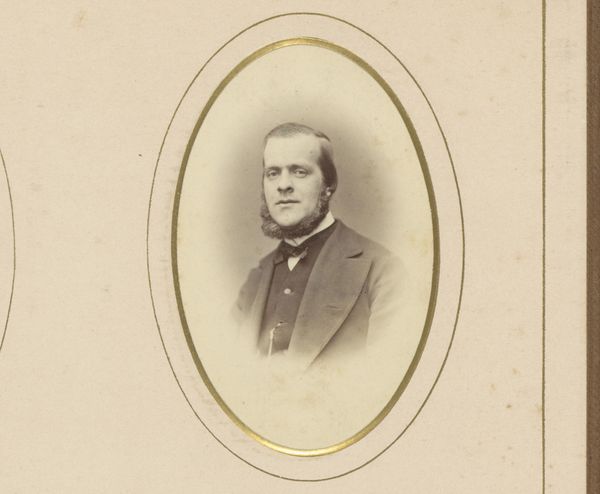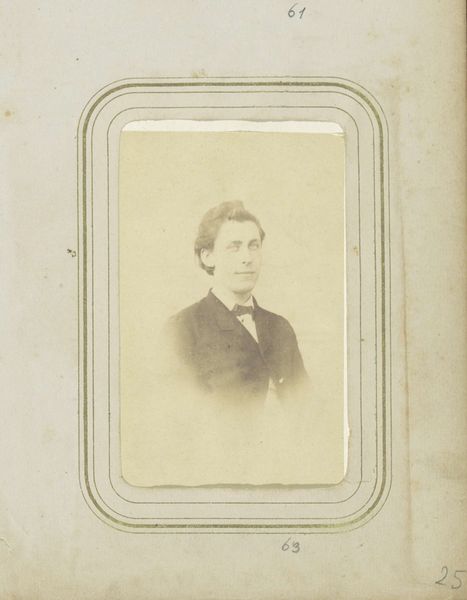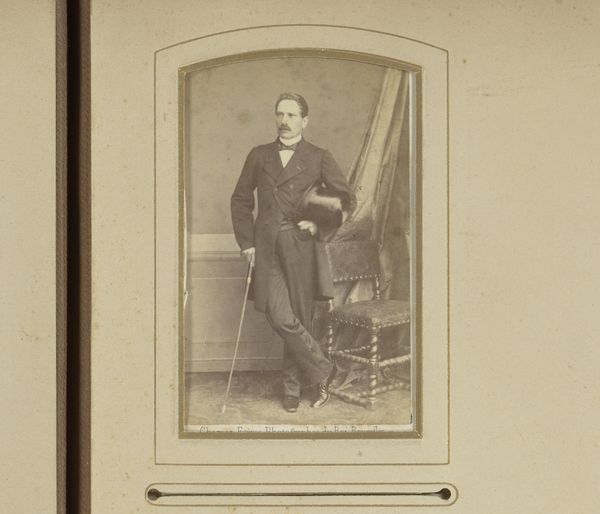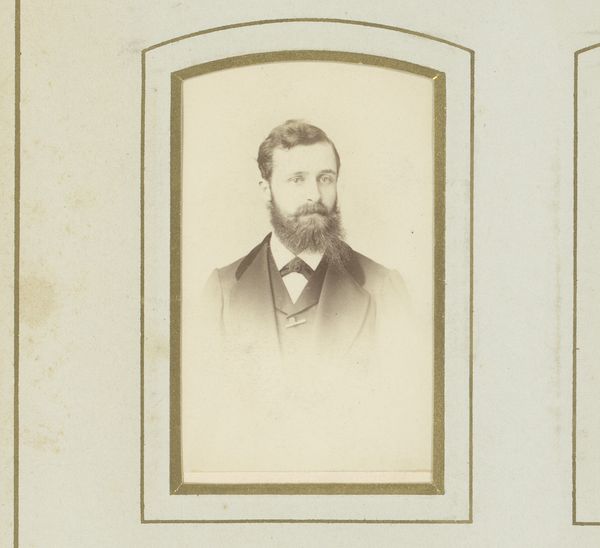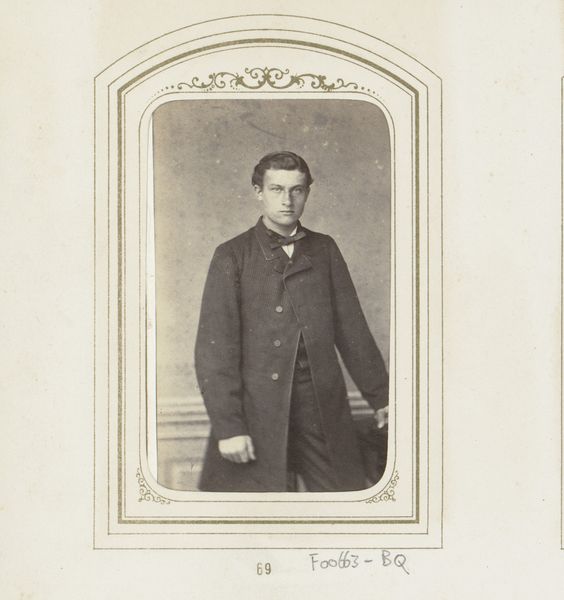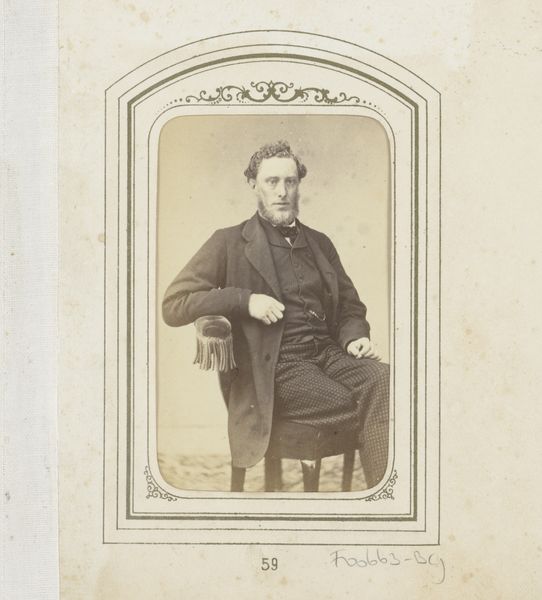
daguerreotype, photography
#
portrait
#
daguerreotype
#
photography
#
historical photography
#
19th century
#
genre-painting
Dimensions: height 86 mm, width 53 mm
Copyright: Rijks Museum: Open Domain
Curator: Here we have a daguerreotype by Charles Reutlinger, titled "Portret van een staande man met baard," dating from between 1850 and 1881. It's a classic example of early portrait photography. Editor: My immediate impression is one of quiet reserve. He has a melancholic look, framed by that meticulous beard, suggesting a certain Victorian seriousness, or perhaps constraint? Curator: That’s a very perceptive reading. The beard was certainly a status symbol, wasn't it? In those times beards communicated maturity and intellectual pursuit. Editor: Exactly. And Reutlinger captures not only his appearance, but also an emerging sense of masculine identity and presentation. The man poses with his hand on what appears to be books. Note his elegant waistcoat. These visual codes convey class, occupation and perhaps ambition within a changing social hierarchy. I see elements of performance embedded into every stage of early photographic portraits such as this one. Curator: I agree. Reutlinger’s choice of the daguerreotype—a notoriously sharp, detailed process—creates almost sculptural representation. What strikes me are the layers of meaning he encodes, consciously or not. Do you notice any recurring forms that indicate patterns over time? Editor: For me, there's a tension. He seems powerful and authoritative but is simultaneously caught in what must have been a demanding photographic process, a rigidity enforced by technology of that era. Even as new methods emerged and social status could become performative, this historical record has proven more enduring. I can't help but read an unsettling anxiety beneath the surface of what seems to be such a respectable and poised subject. Curator: A powerful tension indeed. He embodies progress but he's forever captured by old tech, forever gazing at our future from his past. Editor: Right, and ultimately we are left to analyze and unpack how those early codes continue to speak across centuries and cultural contexts. Curator: The image continues to offer new possibilities for dialogue, revealing nuances that previous scholars may not have noted. It all invites us to reconsider our place within the complex timeline of visual history.
Comments
No comments
Be the first to comment and join the conversation on the ultimate creative platform.
